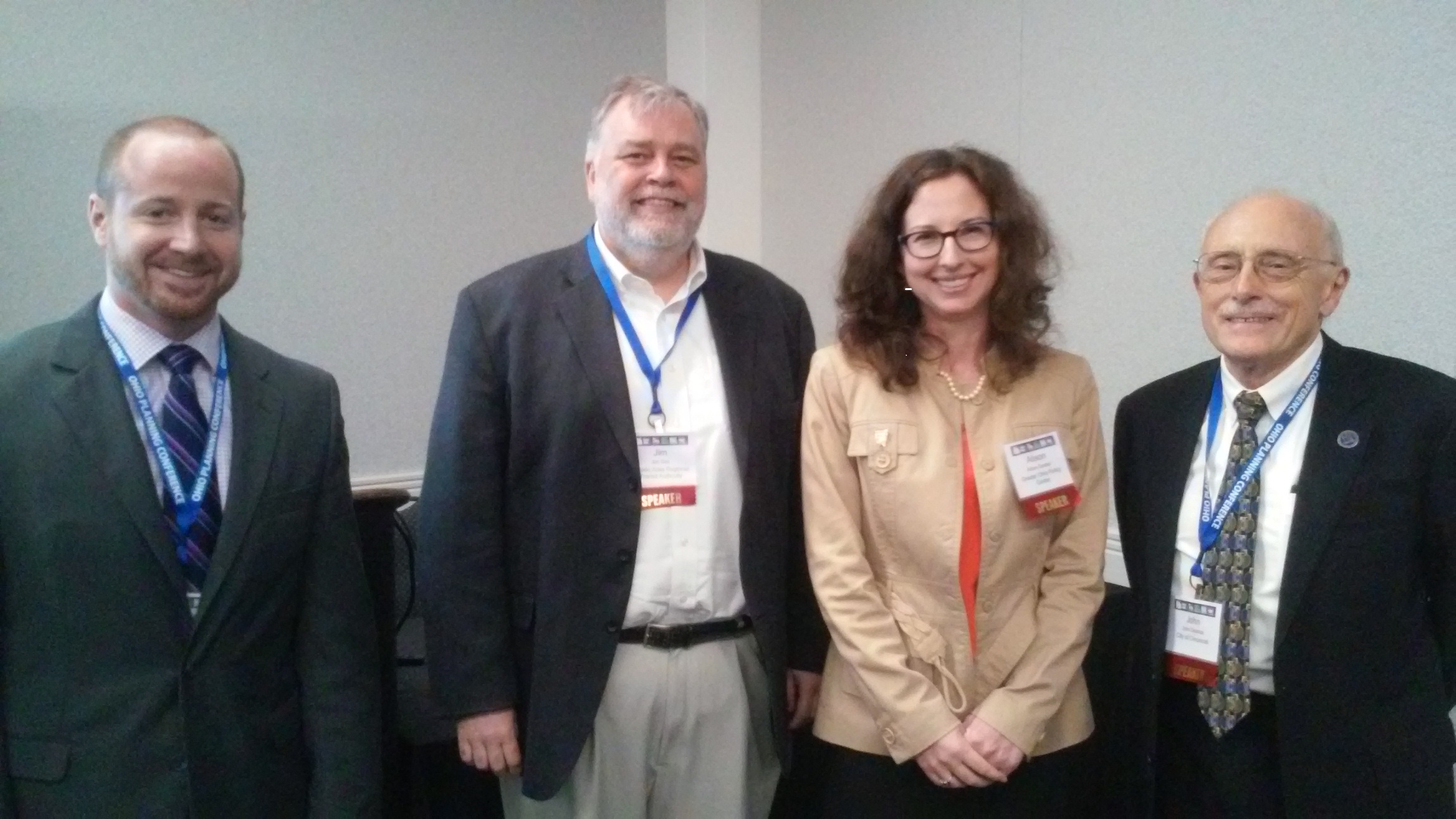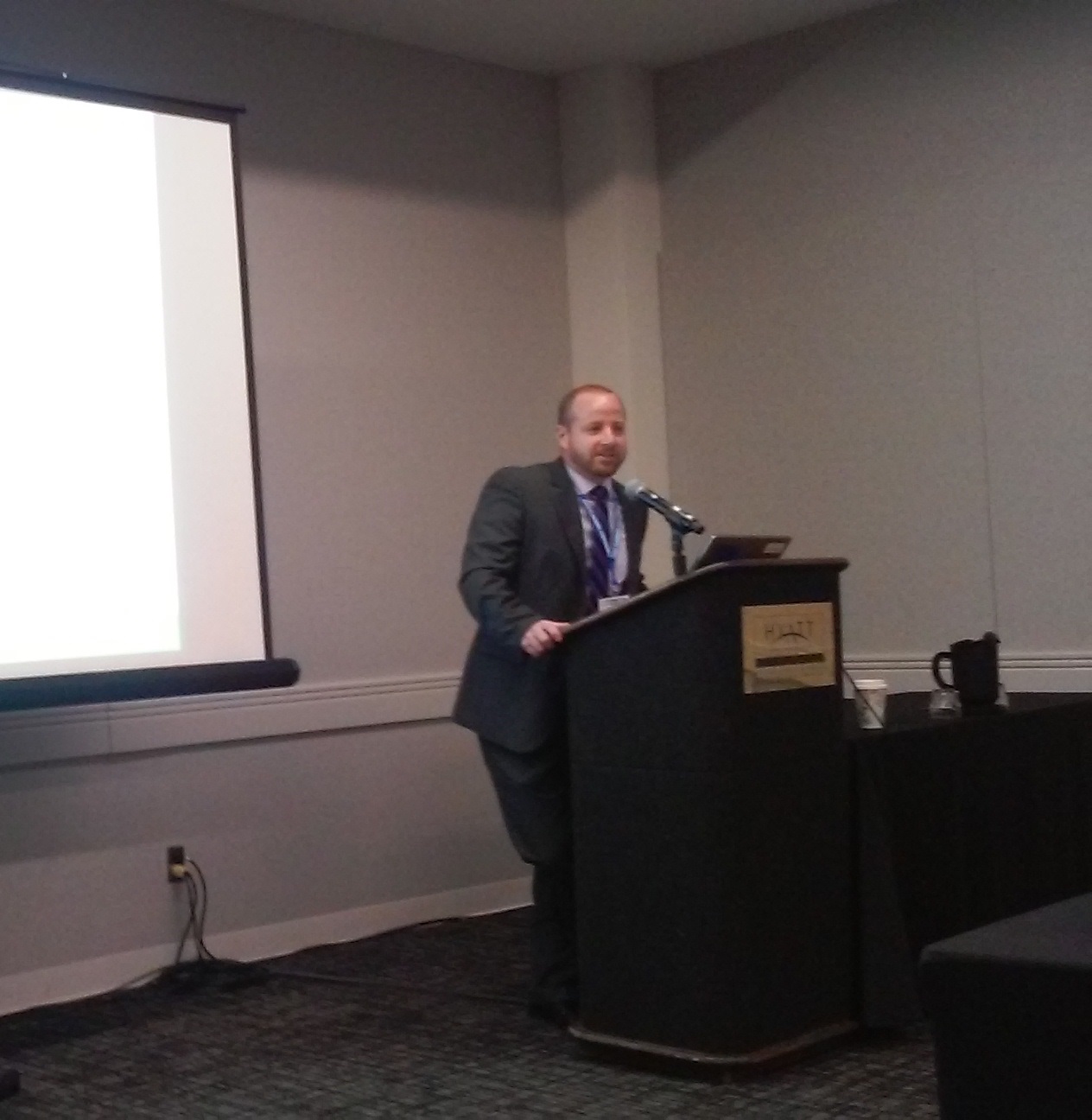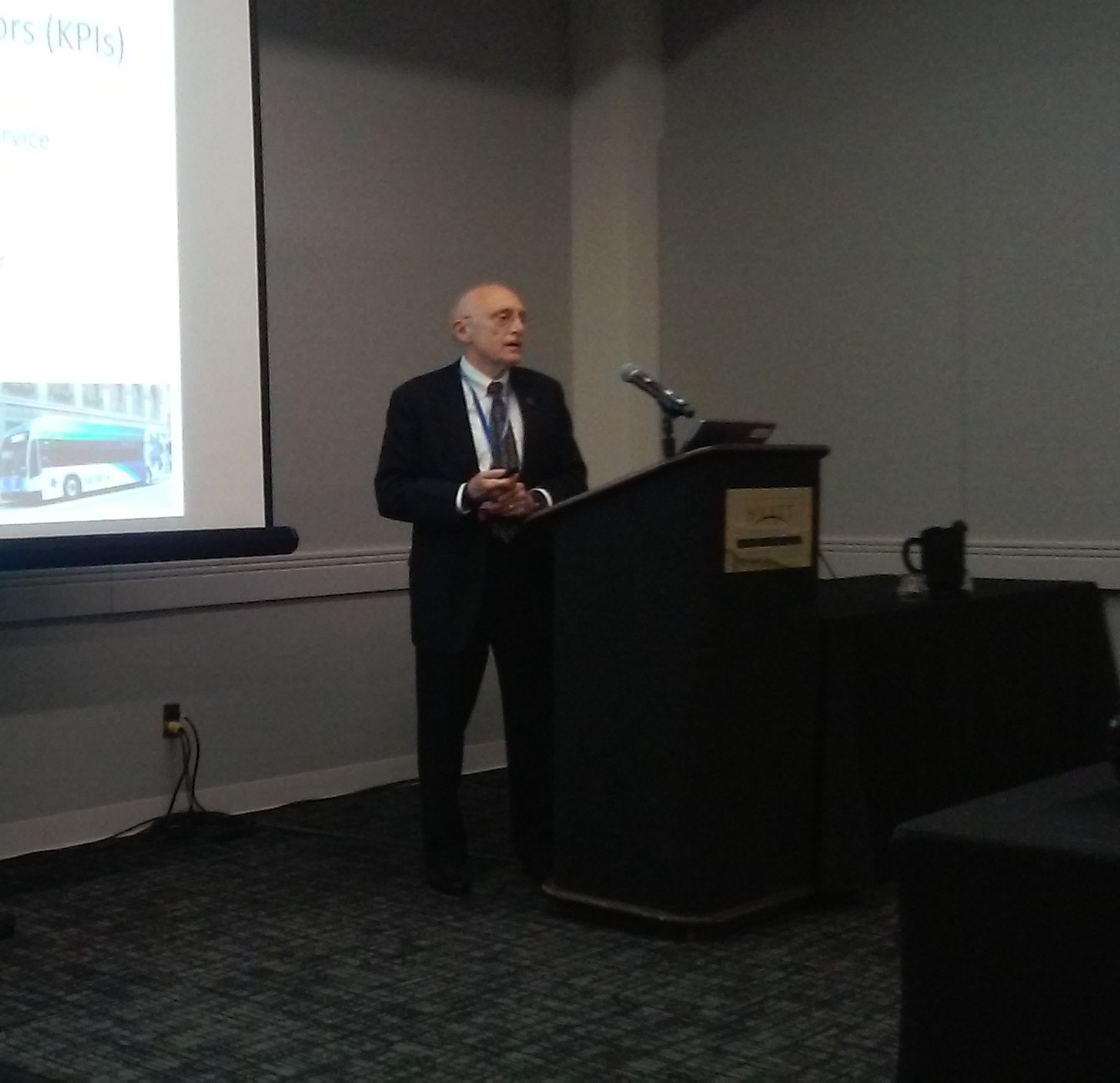By Alex Highley, GOPC Project Associate As part of the first breakout sessions at the 2016 ODOT Conference held at the Convention Center in Columbus, Greater Ohio Policy Center’s Deputy Director Alison Goebel moderated a panel session titled: “Models for Success: Moving Transit Forward in Times of Fiscal Constraint.” After Goebel’s brief comments to frame the session, speakers from Dayton, Cincinnati, and Toledo each discussed the funding models for their respective transit systems and highlighted the current challenges of ensuring that transit is well supported in Ohio. Brandon Policicchio of the Greater Regional Transit Authority, John Deatrick of the City of Cincinnati, and Jim Gee of the Toledo Regional Transit Authority summarized key facts about their area transit systems and described funding opportunities and sources, strategic partners, and innovative services each system provides.
Speakers from left: Brandon Policicchio, Jim Gee, Alison Goebel, and John Deatrick
In Ohio, Regional Transit Authorities (RTAs) are funded with a variety of local funding sources. Eight counties utilize a county sales tax of up to 1%. Policicchio noted that Dayton’s RTA benefits over the long term from assurances that that revenue stream will continue, given that the half-cent sales tax does not expire for renewal. A few counties generate the majority of their RTA revenue via non-sales tax means: Toledo Area RTA (TARTA), the Steel Valley, and the Ohio Valley levy a property tax and the Cincinnati area RTA (SORTA) levies an income tax. Interestingly, Deatrick noted that Cincinnati will begin to levy a new parking fee to generate a few million dollars to fund the Streetcar, which will be unveiled in September.
While 27 Ohio counties do not even operate a public transit system, and given that 60 percent of public transit trips are work trips (medical trips are the second most common destination for transit riders), local transit systems would greatly benefit from increased state support. As GOPC has highlighted in recent memos, Ohio’s contribution to transit calculates to 63 cents per capita, which ranks 38th in the nation – in between Mississippi and North Dakota. With federal grant support few and far between, Gee explained that many existing transit authorities must scramble to find creative local ways to ensure their systems continue to serve riders.
Despite the strains facing Ohio’s transit systems, Gee emphasized that there are reasons to be encouraged about transit in Ohio. Firstly, ODOT remains an important player and a key partner in ensuring that transit has a bright future in Ohio. GOPC echoes this support of the state’s role and was encouraged by ODOT’s commission of the 2015 Transit Needs Study. Secondly, baby boomers and millennials simply demand more public transportation and will be a significant voice in this issue. Thirdly, there are already many success stories in Ohio; as Policicchio and Deatrick discussed, Dayton serves over 200,000 annual trips while Cincinnati is implementing exciting mobile technologies such as fare purchasing via smartphone as part of its imminent Streetcar rollout. Moreover, Cleveland was selected to host the recent Republican National Convention in large part due to its robust light rail system and excellent Bus Rapid Transit fleet.
From left: Policicchio, Gee, and Deatrick
The need for additional state support is clear, however this session highlighted that Ohio’s transit agencies are acting creatively and resourcefully to meet demand for their services.





